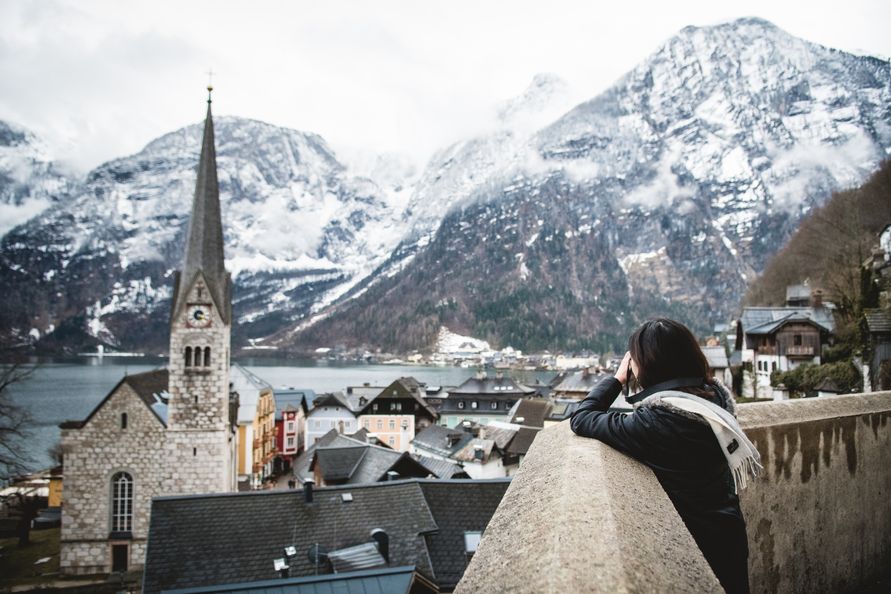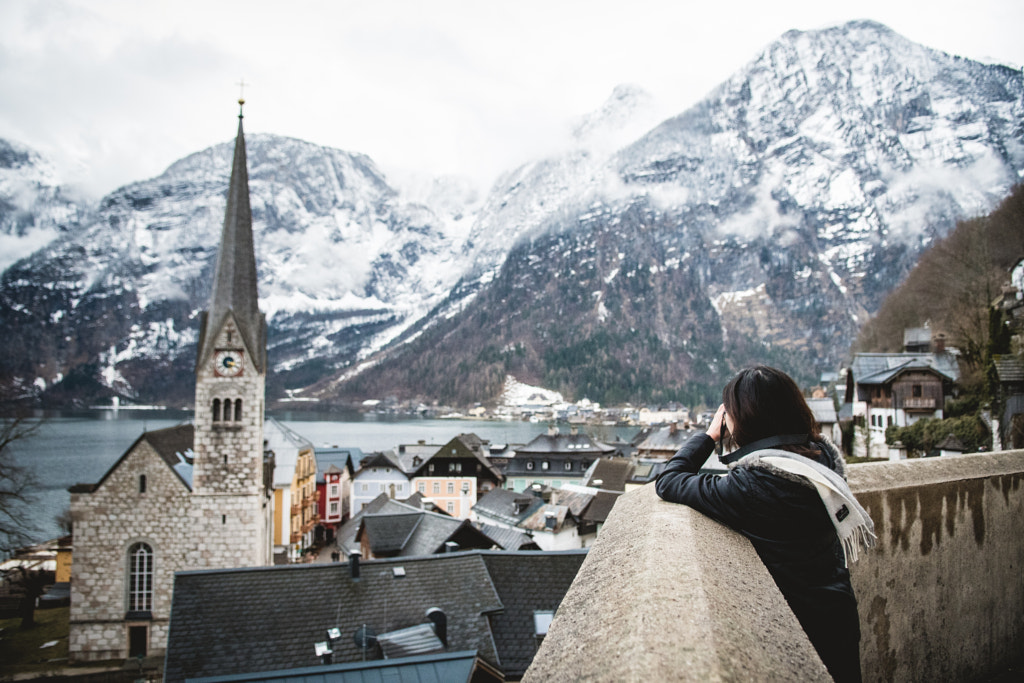“Does it ever stop feeling like a vacation here?” I ask my Austrian friend who has spent his childhood in Hallstatt, while I am here for the first time. I can sense that he is proud of his hometown even though he went on to say “There’s nothing much to do here so it gets bored after a while because it is a small town, but we’ve got an elementary school here.”
“I supposed it’s because Instagram didn’t exist back then — everything was peaceful and quiet here and our public restroom was well-maintained,” he quipped.
To date, the fairytale village of 800 receives 1 million tourists annually, and the Austrian government is looking at limiting the number of tourists visiting Hallstatt.
Europe’s Most Photogenic Fairytale Village
Hallstatt is a quaint lakeside village in upper Austria and it is one of Europe’s most photogenic gems (largely attributed to the advent of social media and most recently, Disney’s Frozen).
I didn’t learn about Hallstatt until I saw pictures of them on Instagram, which inspired my trip to Austria. It is fairly easy to get to this fairytale lakeside village from Salzburg via a 4-hour train journey followed by a 15-minutes ferry ride, but you will have to make your way to the train station early before 10 a.m. Alternatively, you can also choose to travel by bus but that will take a longer time. The last ferry departs Hallstatt at around 7 p.m. Most importantly, remember to bring enough cash to pay for the ferry ride (the return-ticket cost about 6 euros).
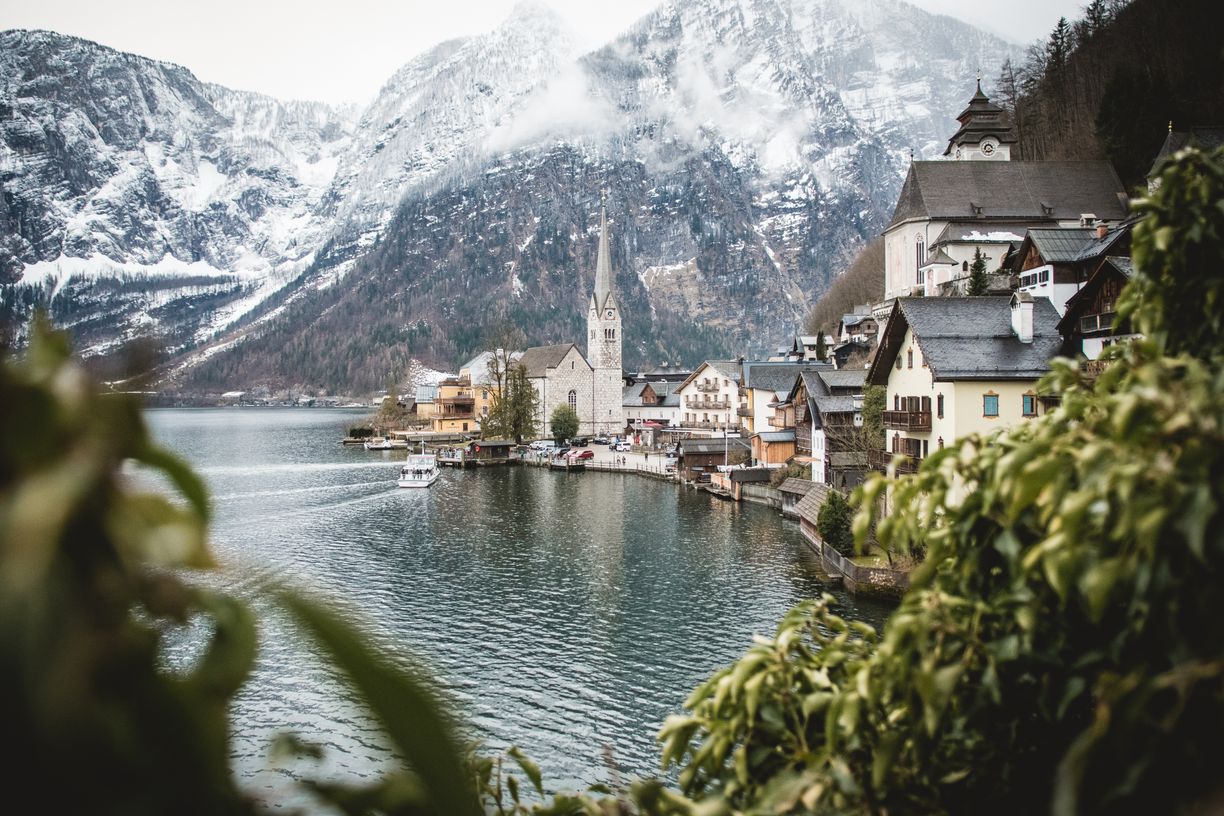
Postcard-perfect, sublime, surreal, they are all true and befitting of Hallstatt.
It’s not difficult to see why this village has been dubbed the ‘Most Instagrammable’ place in the world and lakeside accommodation can cost more than SGD$500 a night during peak season.
Hallstatt: Of Salt Mines and Bone House
Unbeknownst to many, Hallstatt was the centre of salting mining in central Europe. Its name literally translates to ‘salt settlement’. Sad to say, I didn’t get a chance to visit the world’s oldest salt mine as the funicular to the caves was closed due to the inclement weather.
It was a Monday when I arrived in Hallstatt and it was relatively quiet. We strolled around town before several tourists with selfie-sticks filled the colourful marktplatz.
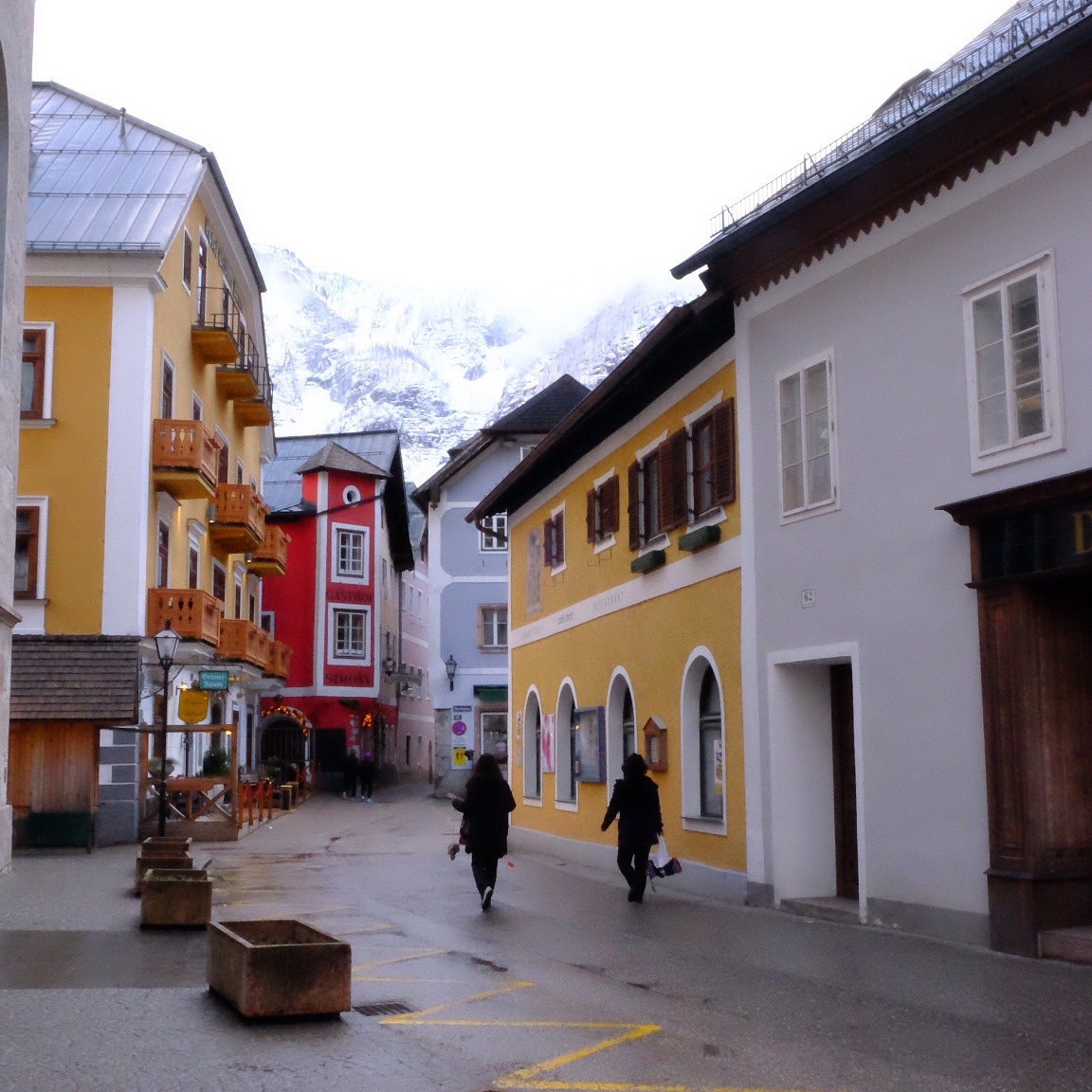
“There’s no such thing as the elevator in Hallstatt, so our athletic postman has to climb the steps to deliver the mails.”
Hallstatt is an idyllic Alpine village with timber homes tightly stacked on the hill, which is similar to the poster child of Greece, Santorini with houses nestled on the island’s cliff.
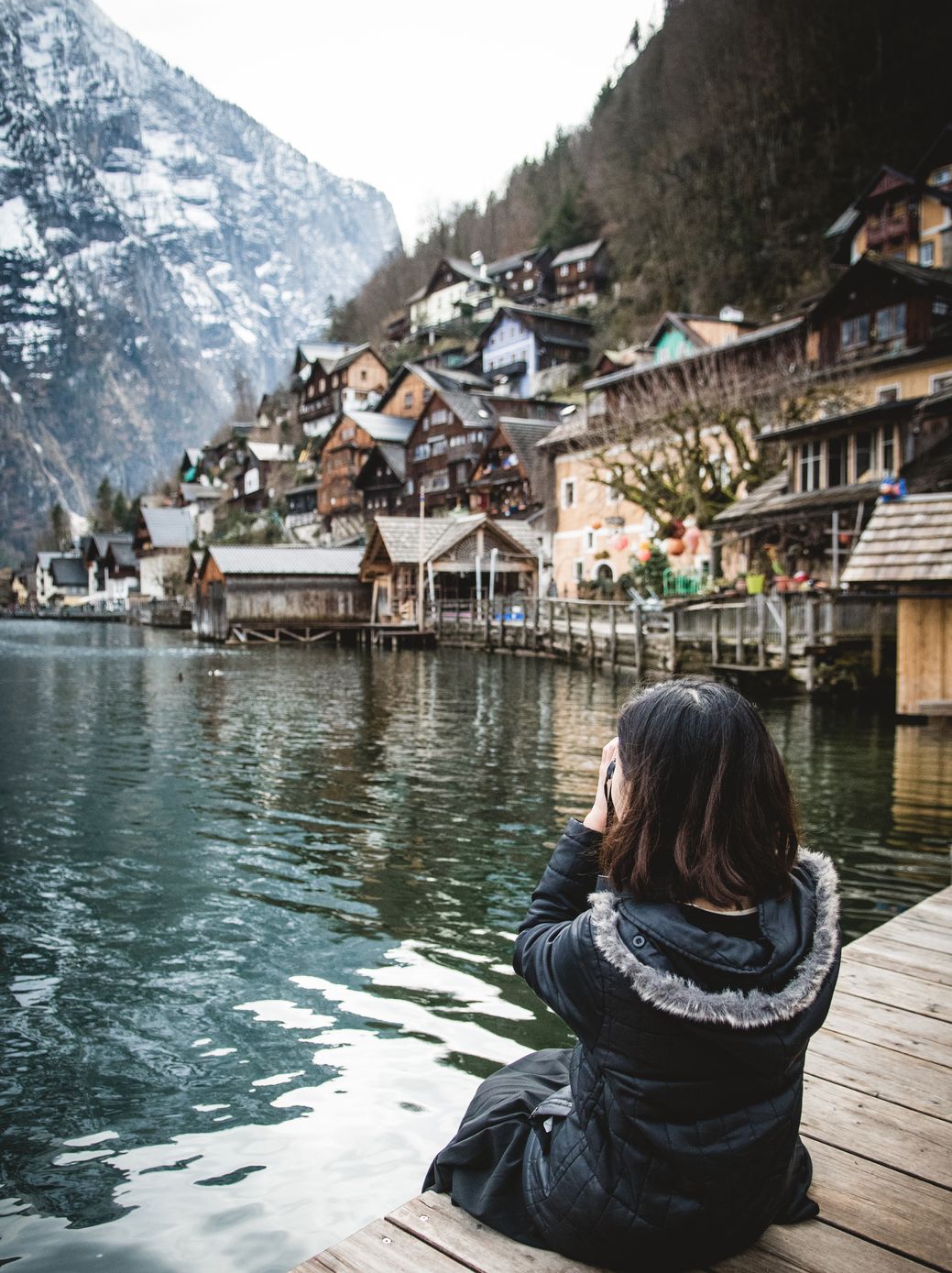
Hallstatt is no doubt a small town and it’s walkable as long as you put on the right footwear (no heels and stilettos for the love of your ankles). And I was fully prepared to climb the stone steps and trek uphill.
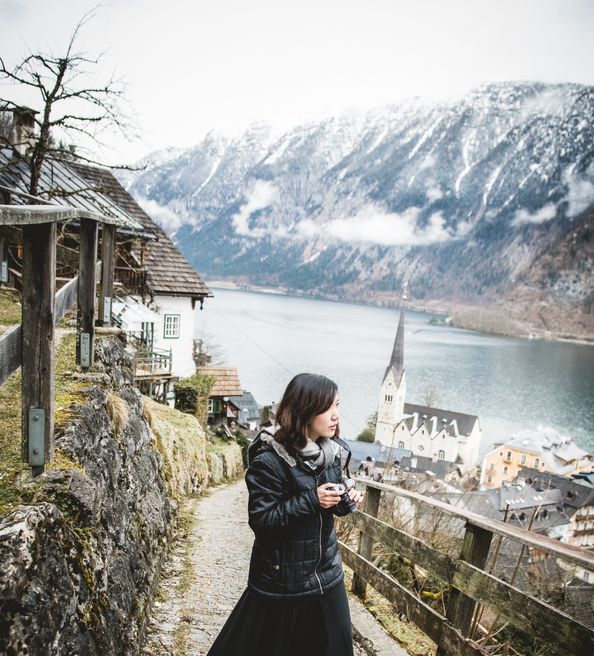
With a history that dates back to 5th millennium BC, other than the remarkable centuries-old salt mines and idyllic postcard view, the next most historic site in Hallstatt is something sombre – The Beinhause (Bone House). Also known as the Charnel house in St. Michael Chapel, which houses over 600 artistically painted skulls inscribed with death dates and family names. This custom has been observed since the 12th century and is an extant cultural practice among the locals for their deceased family members. While in Singapore, all the dead are either buried or cremated to be kept in the columbarium (provided that you pay for a niche which can cost up to ten thousand).
I’m not going to lie to say that I wasn’t spooked at all to be in a house full of skulls.
I felt overwhelmed yet at the same time, I was deeply reminded that we are just, mortals; our days are not infinite so carpe diem!
And the idyllic view right outside of the chapel was ready to take all my pensive sadness away.
It was magic.
There is a saying like this: it is better to see something once than to hear about it a thousand times – how true!
I didn’t launch IG Live nor tried to capture everything on my camera when I was bestowed with this view because it felt like a distraction. I decided to let go of the idea of trying to turn every moment into a perfect memory.
Because what’s the point of returning home with plenty of snapshots but with no recollection of what it felt like to just stand and marvel at the sights?
You can’t capture the crisp scent of Alps, the gentle pleasant sound of the crystal-clear lake, and the sound of swans flapping their wings. Each breath I took felt invigorating, fresh and cleansing flowing freely into my lungs.
Nonetheless, regardless of how many shots you take, you wouldn’t have any bad pictures, such is the wonder of Hallstatt.
A UNESCO World Heritage Site – Fairytale Village of Austria
The fairytale village of Austria was almost destroyed by a fire in 1750 and many of the timber houses were razed to the ground. The way Hallstatt looks today with its pastel-coloured facades dates back to the rebuilding efforts at that time.
The region of Hallstatt Dachstein/Salzkammergut was named a UNESCO World Heritage Site in 1997 in recognition of its outstanding natural beauty, historical significance and exemplary preservation.
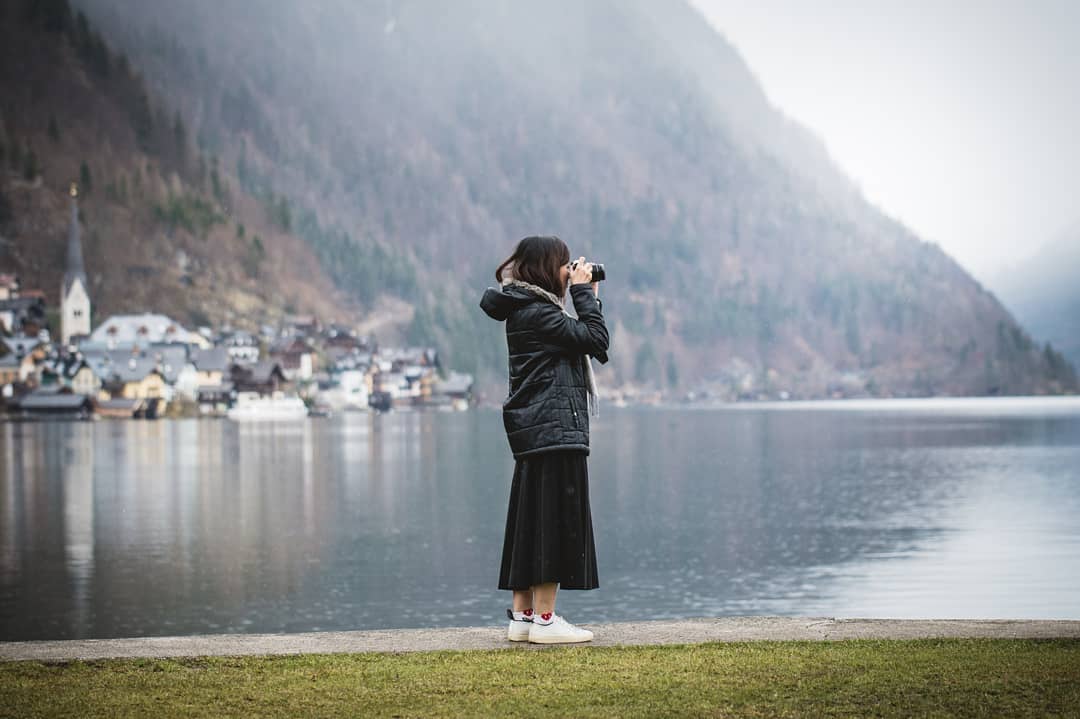
Standing before the Alps and the crystal-clear lake was a humbling experience. No jostling in the street, no city commotion, just the sound of the Hallstättersee (or Lake Hallstatt) and the occasional chatters coming from the key photo spots. To sum it in one word: sublime.
I don’t know if I’ll ever get another chance to be back in this side of the world again, perhaps when I reach the age of retirement. There are just so many countries in the world to explore!
Hallstatt is truly mesmerizing, especially for city-dwellers who are accustomed to air-conditioning, elevators, skyscrapers of steel and glass. Most of us could be binge-living throughout our lives since the advent of the Internet. At times, I felt like my capacity to be surprised and delighted might be greatly reduced in the lion city especially when you have deadlines to be met. But occasionally, we celebrate the small things by giving plenty of thumbs up when we are treated with a spectacular sunset on a weekday in Singapore. It also means that we’re not working overtime.
Now, how does it feel like to be a resident here, in Hallstatt?

Imagine waking up to majestic views of the Alps, shimmering lakes, and come evening, the Alps are dusted with glittery gold!
However, too much of a good thing going on in this enchanting village leads to over-tourism. While it brings financial gains to what was once a sleepy village with many leaving for the city for economic pursuits, today, the residents of this fairytale village are feeling under siege by hordes of tourists. In fact, the locals put up signages like “Please keep your volume down!” and “This is not a museum!” in key photo locations. And there are cases of tourists entering homes uninvited as if Hallstatt is a theme park.
And guess what, a theme park like Hallstatt was built in Huizhou City, China in 2012.
Imitation is the best form of flattery?
The Best Time To Visit Hallstatt
According to the locals, the popular months are July to October as the weather is becoming warmer and you might have a chance to even swim in the lake.
Hallstatt is captivating throughout the seasons and it is so unbelievably photogenic that you won’t be disappointed at all. In fact, you’d wish you could stay here for at least a night if your budget allows.
All photographs belong to Kellin Chew unless otherwise stated.

